The Intel Meteor Lake explainer: allow me to clear up any confusion
Will it or won't it hit the desktop, and does it even matter?
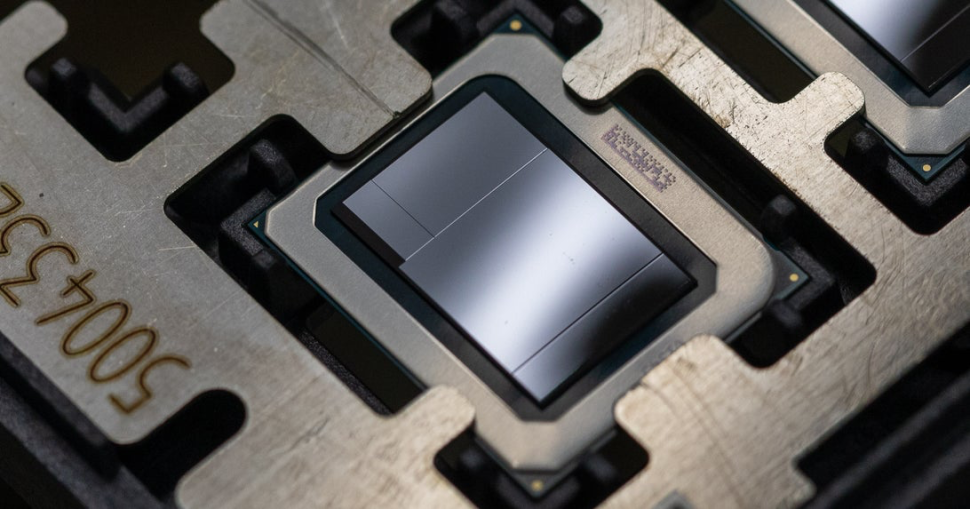
Confusion around Intel's next-gen Meteor Lake CPU is on the rise. Intel's first chiplet chip was recently confirmed as on track for launch later this year. But the big unknown involves the question of whether Meteor Lake will make it to the desktop and if so, in what form.
The latest Meteor Lake rumours speak of a cancelled desktop Meteor Lake-S CPU, replaced by a derivative of the mobile Meteor Lake-P, which in turn will be used as a low-end SKU to sit alongside Intel's Arrow Lake. What's Arrow Lake? That's the true desktop replacement for the existing Raptor Lake 13th Gen CPUs.
Got all that? Good, because it almost certainly misses the point. As we reported on before, all of this hullabaloo can be traced back to early rumours around the new Intel CPU architecture which revealed that Meteor Lake would only offer a maximum of six Performance-cores, a nominal downgrade on the previous generation.
That, very clearly, is a step back from the eight Performance-cores in both 12th Gen Alder Lake and 13th Gen Raptor Lake. Cue much hand wringing over a mooted specification walk back by Intel. Though, in fairness, it wouldn't be entirely without precedent.
After all, Intel wound back from ten cores in Comet Lake, courtesy of the Core i9 10900K, to just eight cores for 11th Gen Rocket Lake and the 11900K. But Intel had very specific reasons for doing that, namely the need to backport some enormous cores originally designed for its tardy 10nm node to the ageing 14nm process.
But, with Meteor Lake, precisely the opposite is happening. It will be Intel's first CPU on its upcoming Intel 4 process, the node formerly known as 7nm. So, squeezing oversized cores into an out of date process isn't the issue in this case.
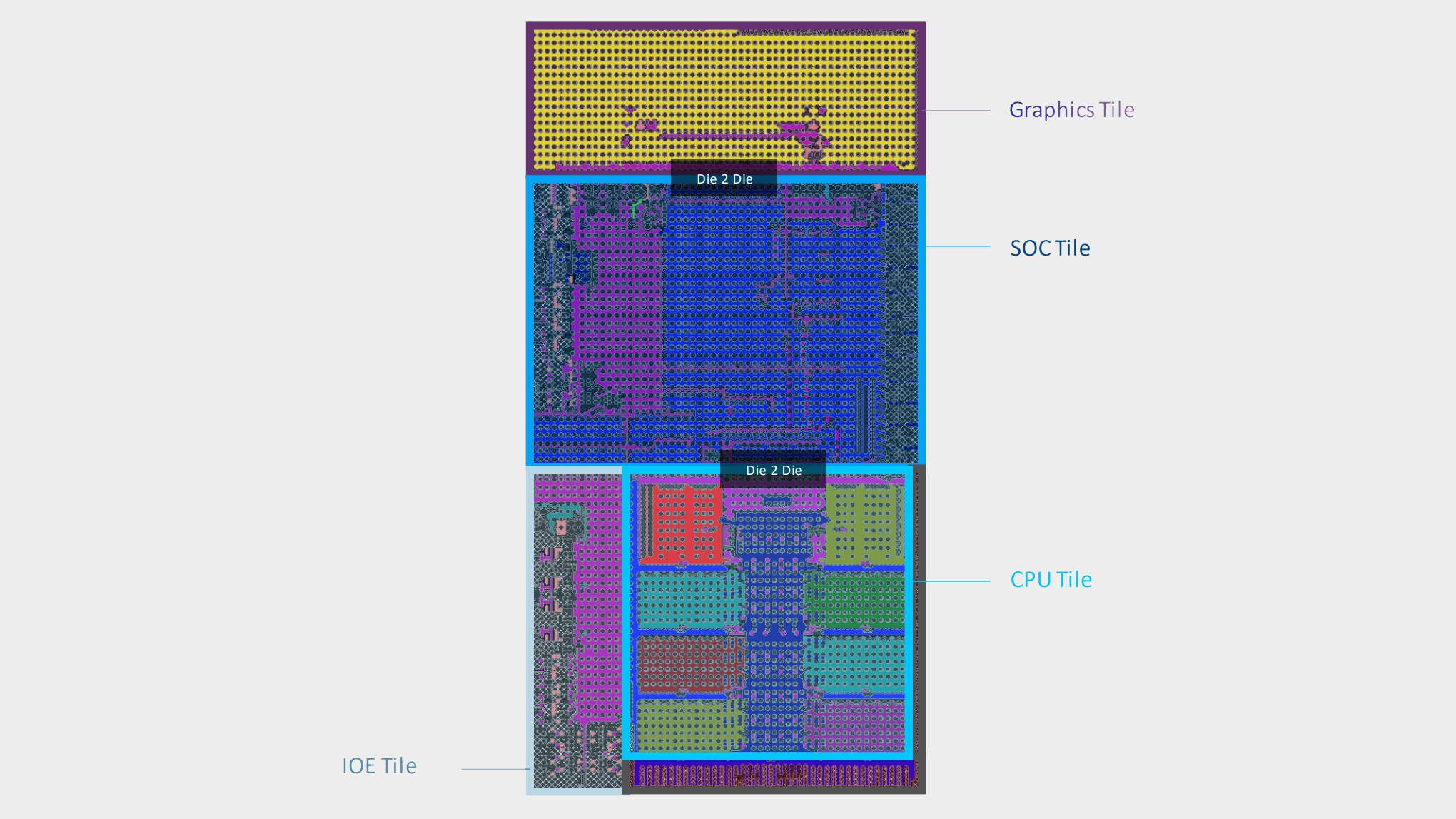
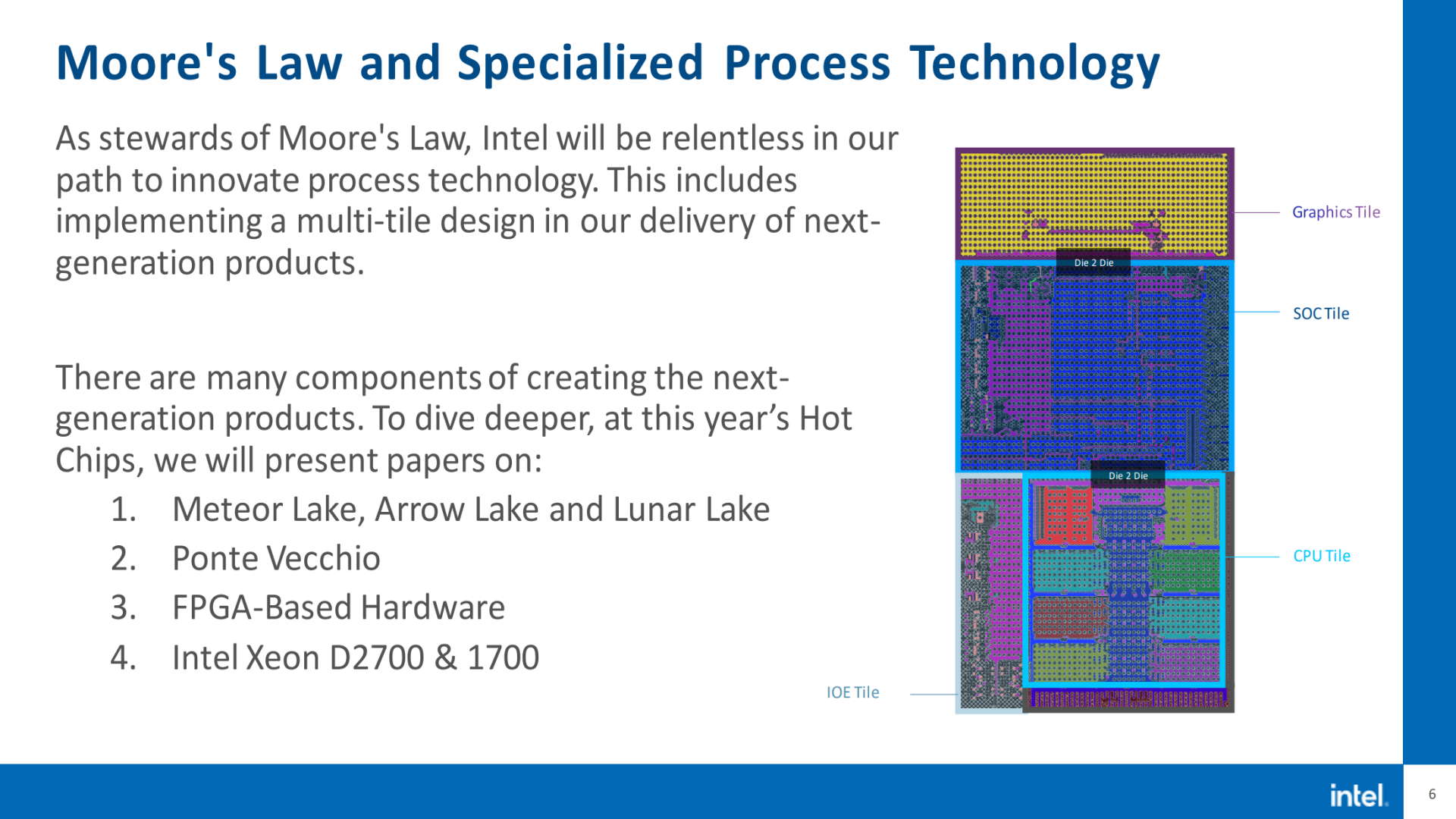
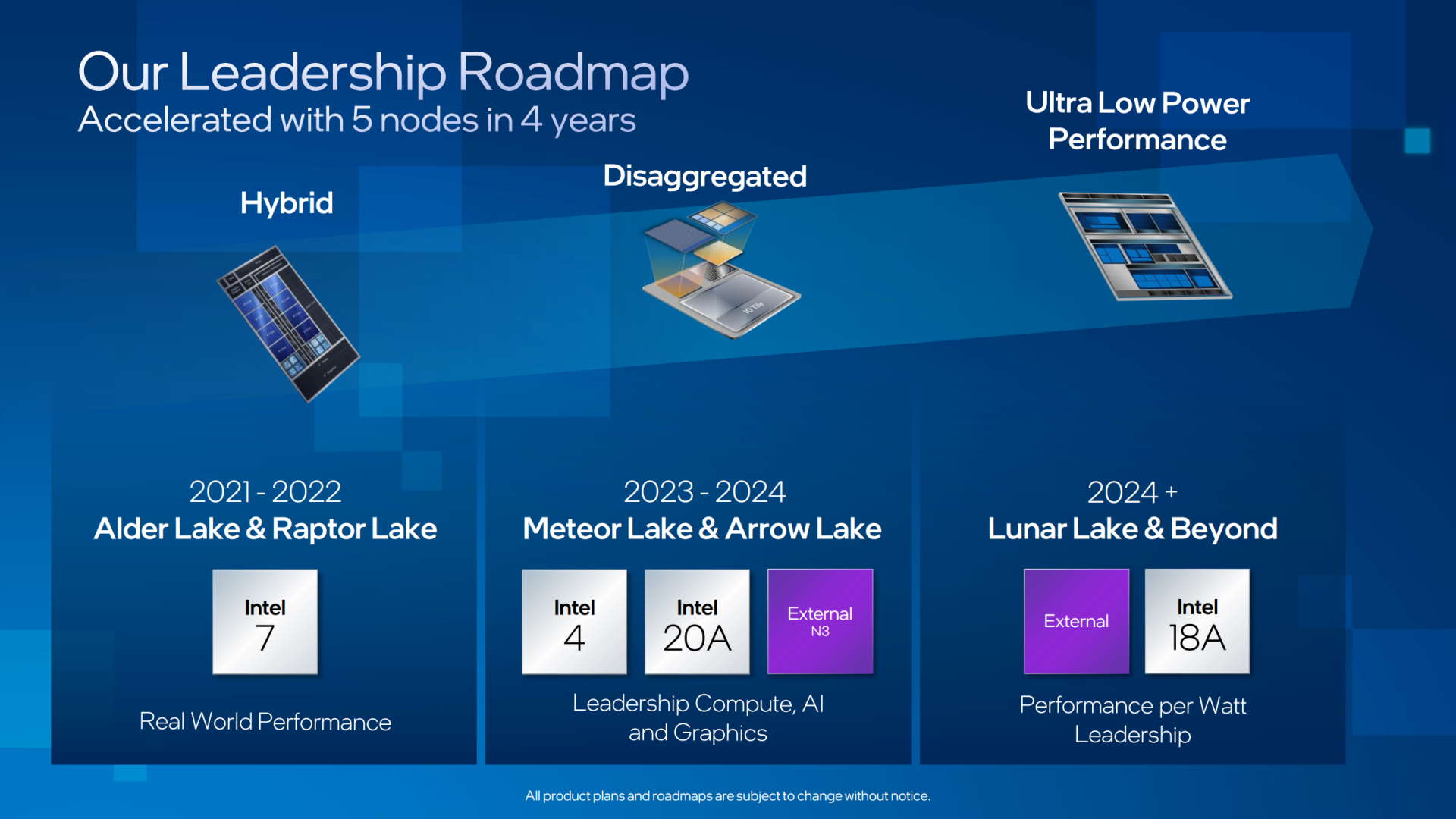
The core architecture for Meteor Lake's CPU tile and Arrow Lake's CPU tile will be the same or very similar.
So, here's the thing about Meteor Lake. It's primarily a mobile architecture, that much is very clear. Lest readers have forgotten, Intel brought out two 10nm CPU families, Ice Lake and Tiger Lake, which never made it to the desktop at all. They too had lower core counts than Intel's desktop chips of the day.
The biggest gaming news, reviews and hardware deals
Keep up to date with the most important stories and the best deals, as picked by the PC Gamer team.
The question that follows is whether Meteor Lake will eventually make it to the desktop and then whether that actually matters. Intel roadmaps indicate the existing Raptor Lake 13th gen CPU family will get a refresh later this year.
At around the same time, perhaps a little later in 2023, Meteor Lake is expected to land in laptops. In 2024, meanwhile, the subsequent Arrow Lake architecture will hit the desktop with models extending all the way to the top of the stack, replacing the existing Core i9 13900K, or whatever the refreshed Raptor Lake flagship chip will be called.
Intel hasn't released full technical details on either Meteor Lake or Arrow Lake as yet, but it has said both architectures are so-called disaggregated designs. In other words, they use chiplets rather than a single CPU die. Or tiles, in Intel parlance.
There will be a chiplet or tile for the CPU cores, a further SoC tile, an IO extender tile, and finally a graphics tile. You can just make out each of those tiles in the image of Meteor Lake at the top of this story.
Very likely, the core architecture for Meteor Lake's CPU tile and Arrow Lake's CPU tile will be the same or very similar, just as Alder Lake and Raptor Lake have essentially the same core architecture.
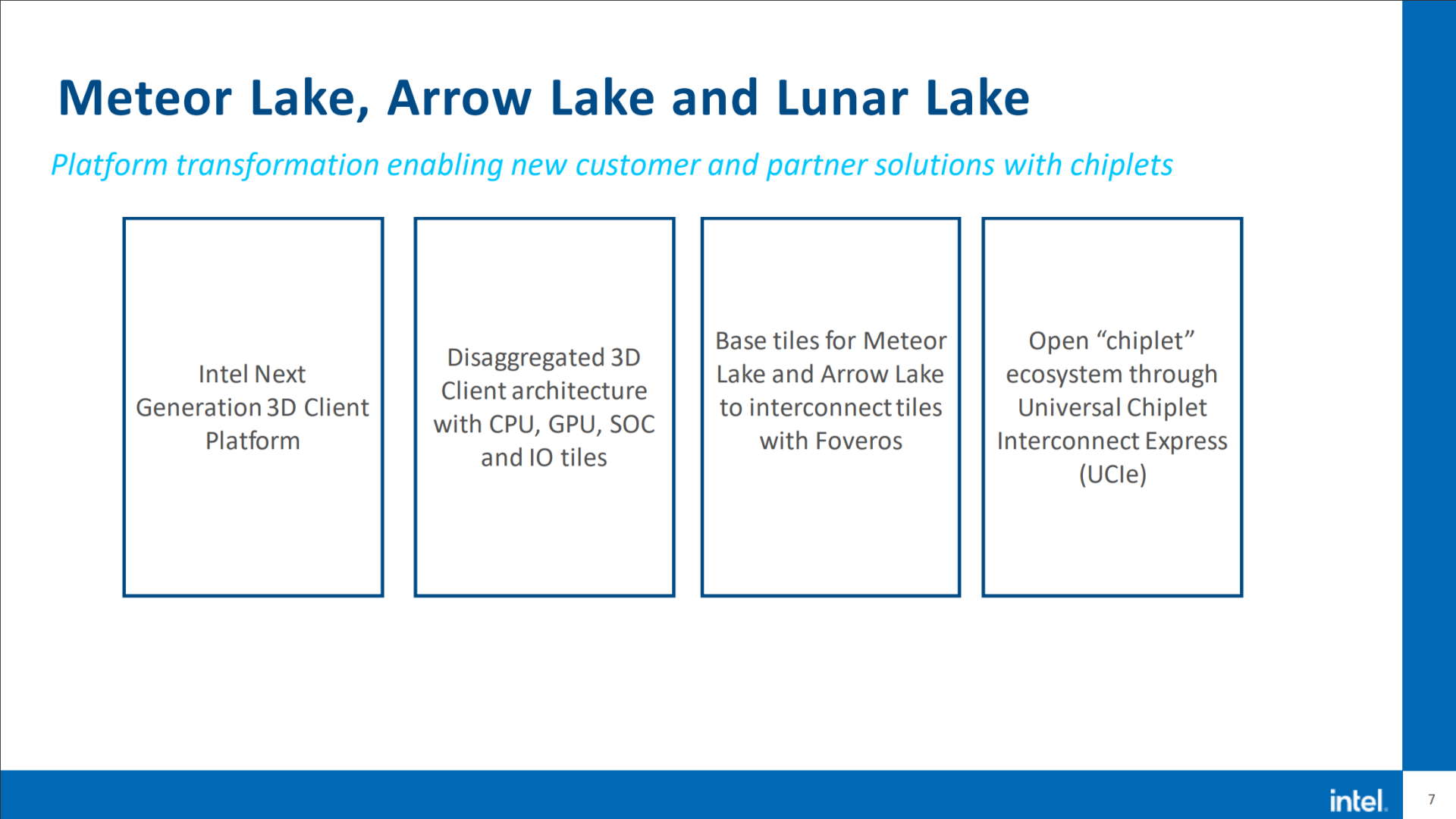
Anyway, that architectural similarity is why Intel is able to offer a single CPU model, such as the Core i5 13400F, using both Alder Lake and Raptor Lake silicon interchangeably. The two generations are so similar, it doesn't actually matter which is used.
Very likely, much the same will apply to Meteor Lake and Arrow Lake. They're similar enough in CPU architecture terms that Intel can insert some nominally Meteor Lake-based CPUs into the lower end of its desktop CPU product stack, alongside its new Arrow Lake chips, and the difference for the end user will be invisible.

Best CPU for gaming: The top chips from Intel and AMD
Best gaming motherboard: The right boards
Best graphics card: Your perfect pixel-pusher awaits
Best SSD for gaming: Get into the game ahead of the rest
The actual details, however, could get very complicated. Will Meteor Lake and Arrow Lake share the SoC tile, for instance? If not, could Meteor Lake desktop use the Meteor Lake CPU tile, but the Arrow Lake SoC tile or vice versa, and so on.
Ultimately, these are questions that are pertinent for Intel's internal planning rather than anything that we as PC users need to worry about. In summary, then, if Intel's roadmap stays the course there will be new desktop processors next year with CPU cores based on the new Intel 4 process, plus a powerful GPU tile from TSMC, along with SoC and IO tiles.
Some of those CPU models will have six performance cores or fewer, plus a variable number of efficiency cores. Others will have higher core counts. Whether those lower to mid-range models are, strictly speaking, Meteor Lake or Arrow Lake, won't matter a great deal in performance terms because they will be architecturally so similar, just as it doesn't matter whether certain 13th gen CPU models are Alder Lake or Raptor Lake. Either way, you get the same performance.
So, was Meteor Lake ever slated for the desktop? Does it even make sense to suggest it was cancelled for the desktop, only to be resurrected in some limited form for low end SKUs alongside Arrow Lake?
Ultimately, it's all rather a storm in a teacup, little more than fuel for the fires of the online rumour rounds. Meteor Lake may or may not make it to the desktop. But it probably won't make much if any difference to the performance of the CPUs we'll all end up buying.

Jeremy has been writing about technology and PCs since the 90nm Netburst era (Google it!) and enjoys nothing more than a serious dissertation on the finer points of monitor input lag and overshoot followed by a forensic examination of advanced lithography. Or maybe he just likes machines that go “ping!” He also has a thing for tennis and cars.

